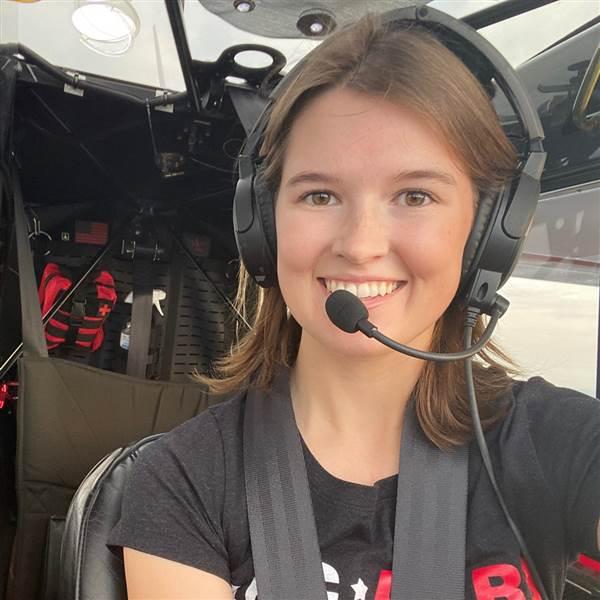Flying Mentors
Beechcraft T–34s take hold on family

My grandfather-in-law buys, sells, and trades airplanes like baseball cards. Jimmie Hunt, 86, has owned more than 100 airplanes and airplane projects in his life, and he is still going. Throughout his 70-year-long aviation career, a few airplane purchases stand out: two P–51 Mustangs, a Hawker Sea Fury project, and his very first, a Luscombe. While these airplanes have come and gone, one type has always stuck around. Over the past 50 years, the Hunts have always had at least one Beechcraft T–34 Mentor in their possession. The addiction began in the mid-1970s after Jimmie and Leen Hunt purchased a stock T–34 from a Civil Air Patrol auction.
“They always interested me,” said Jimmie. “We liked the military theme and that it was a basic trainer, but aside from that they are just an all-around fun airplane.”
This two-seat version of the Beechcraft Bonanza served as a military training platform for two generations of U.S. Air Force and Navy pilots. Originally put into service in 1953, the T–34A saw 59 years of continuous military use.
 “Aside from it being the first warbird we ever owned, the T–34 just can’t be beat,” said Jimmie’s son, Paul Hunt. “It’s super easy to fly, there’s lots of parts availability, and it doesn’t burn a lot of gas compared to something like a T–6.”
“Aside from it being the first warbird we ever owned, the T–34 just can’t be beat,” said Jimmie’s son, Paul Hunt. “It’s super easy to fly, there’s lots of parts availability, and it doesn’t burn a lot of gas compared to something like a T–6.”
Mentors fit the Hunts’ mission so perfectly that they acquired a dozen T–34s over a nearly 50-year period.
“The nicest one we had was a red and white B model,” said Paul. “It was completely restored with an IO-550 engine. But the one I like the most is the one that we have now, Papa Sierra. It just means a lot to the family.”
Papa Sierra, a 1953 T–34A, was one of around 400 civilian-owned Mentors that faced a strict limitation imposed by the FAA after three, fatal in-flight failures of wing spars, which eventually led to the grounding of all T–34s.
“Papa Sierra was by far the most difficult T–34 restoration because it took years to get the wing AD sorted out,” said Paul. “It just laid in the hangar on its side for a long time.”
“We trucked Papa Sierra to Amarillo, Texas, to take care of the AD and other upgrades,” said Jimmie. “After that we shipped the wings and fuselage to Paul’s hangar at Falcon Field and ordered a 300-horsepower IO-550.”
It was over those years where all Hunt hands were being put to work, including Paul’s son, Ryan, who was younger than 10 at the time.
“My dad made me go out to the hangar every day to help clean that project,” said Ryan. “I hated it. I had a real lack of appreciation for it. ” Now a professional pilot, Ryan owes part of his career to the airplane he once couldn’t stand.
“I built a lot of my time in Papa Sierra,” said Ryan. “That was one of the highest flight times in my logbook. I earned my commercial rating entirely in the T–34.”
Although Papa Sierra holds a special place in the Hunts’ hearts, I couldn’t help but wonder at the possibility of Papa Sierra finding its way to Trade-A-Plane or Barnstormer.com one day. Jimmie and Paul answered with a resounding “no,” but once again the youngest Hunt had a slightly different opinion. “I think I would be at peace if it ever sold,” said Ryan. “I would be sad to see it go, but I wouldn’t cry over it. It’s cool to think of another family being able to build memories with it, just as we have done.”



